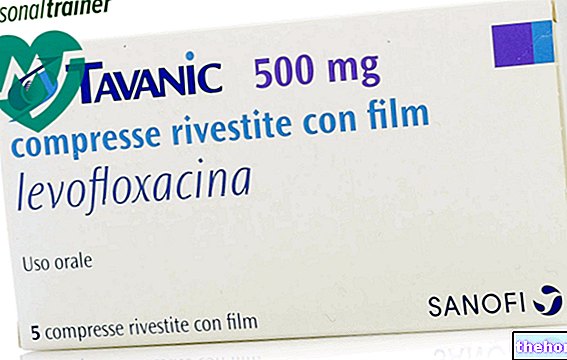Active ingredients: Metoclopramide
PLASIL 10 mg tablets
Plasil package inserts are available for packs:- PLASIL 10 mg tablets
- PLASIL 10 mg / 10 ml syrup
- PLASIL 10 mg / 2 ml solution for injection
Why is Plasil used? What is it for?
Plasil belongs to the class of drugs for gastrointestinal functional disorders and associates strong antiemetic properties with intestinal prokinetic activity.
THERAPEUTIC INDICATIONS
Adult population
Plasil is indicated in adults for:
- Prevention of delayed chemotherapy induced nausea and vomiting (CINV)
- Prevention of radiotherapy induced nausea and vomiting (RINV)
- Symptomatic treatment of nausea and vomiting, including acute migraine induced nausea and vomiting. Metoclopramide can be used in combination with oral analgesics to improve the absorption of analgesics in acute migraine.
Pediatric population
Plasil is indicated in children aged 1 to 18 years for:
- Prevention of delayed chemotherapy induced nausea and vomiting (CINV) as a second-line option
Contraindications When Plasil should not be used
- Hypersensitivity to the active substance or to any of the excipients listed in section 6.1
- Gastrointestinal haemorrhage, mechanical obstruction or gastrointestinal perforation for which stimulation of gastrointestinal motility poses a risk
- Confirmed or suspected pheochromocytoma, due to the risk of episodes of severe hypertension
- Patients with glaucoma
- History of tardive dyskinesia induced by neuroleptics or metoclopramide
- Epilepsy (increased frequency and intensity of seizures)
- Parkinson's disease
- Combination with levodopa or dopaminergic agonists (see section "Interactions")
- Known history of methemoglobinaemia with metoclopramide or of NADH cytochrome b5 reductase deficiency
- Use in children under 1 year of age due to the increased risk of extrapyramidal disorders (see section "Special Warnings")
Precautions for use What you need to know before taking Plasil
Renal and hepatic insufficiency
In patients with renal insufficiency or severe hepatic insufficiency, a reduction of the dosage is recommended (see section “Dose, method and time of administration”).
Cardiac pathologies
Serious cardiovascular undesirable effects, including cases of circulatory collapse, severe bradycardia, cardiac arrest and QT interval prolongation have been reported following administration of injectable metoclopramide, particularly intravenously (see section “Undesirable effects”).
Particular caution should be exercised in administering metoclopramide, particularly intravenously to the elderly, to patients with cardiac conduction disturbances (including QT interval prolongation), to patients with uncorrected electrolyte imbalance, bradycardia and to patients taking other drugs. known to prolong the QT interval.
Intravenous doses should be given as a slow bolus (at least 3 minutes in duration) to reduce the risk of adverse effects (eg, hypotension, akathisia).
The possible increase in prolactin levels should be carefully considered, particularly in patients with breast cancer or prolactin-secreting pituitary adenoma.
The concomitant use of metoclopramide with alcoholic beverages is not recommended.
Interactions Which drugs or foods can modify the effect of Plasil
Tell your doctor or pharmacist if you have recently taken any other medicines, even those without a prescription.
Contraindicated associations
Levodopa or dopaminergic agonists and metoclopramide antagonize each other (see section “Contraindications”).
Associations to avoid:
Alcohol enhances the sedative effect of metoclopramide
Associations to consider:
Due to the prokinetic effect of metoclopramide, the absorption of some drugs may be impaired.
Anticholinergics and morphine derivatives
Anticholinergics and morphine derivatives may both have an antagonistic effect to metoclopramide on digestive tract motility.
Central nervous system depressants (morphine derivatives, anxiolytics, sedative H1 antihistamines, sedative antidepressants, barbiturates, clonidine and related drugs)
The sedative effects of CNS depressant drugs and metoclopramide are potentiated.
Neuroleptics
Metoclopramide may have an additive effect with other neuroleptics in the case of extrapyramidal disorders.
Serotonergic drugs
Using metoclopramide with serotonergic drugs such as SSRIs may increase the risk of serotonin syndrome.
Digoxin
Metoclopramide could reduce the bioavailability of digoxin. Close monitoring of digoxin plasma concentrations is required.
Cyclosporine
Metoclopramide increases the bioavailability of cyclosporine (Cmax by 46% and exposure by 22%). Close monitoring of cyclosporine plasma concentrations is required. The clinical consequences are uncertain.
Mivacurium and suxamethonium
Injection of metoclopramide can prolong the duration of neuromuscular block (through inhibition of plasma cholinesterases).
Strong inhibitors of CYP2D6
Exposure levels of metoclopramide are increased when administered concomitantly with strong CYP2D6 inhibitors such as fluoxetine and paroxetine. Although clinical significance is uncertain, patients should be monitored for adverse reactions.
Cisplatin
Some observations report, with metoclopramide, an increase in the renal toxicity of cisplatin.
Insulin
By reducing intestinal transit including food, metoclopramide treatment may require adjustment of insulin dosage in diabetes. Metoclopramide also reduces the effects of apomorphine on the S.N.C.
Warnings It is important to know that:
Neurological disorders
Extrapyramidal disorders may occur, particularly in children and young adults and / or with the use of high doses. These reactions generally occur at the start of treatment and can occur after a single administration. Metoclopramide should be discontinued immediately in case of extrapyramidal symptoms. These effects are generally completely reversible after discontinuation of treatment but may require symptomatic treatment (benzodiazepines in children and / or anticholinergic and antiparkinsonian drugs in adults). The time interval of at least 6 hours between two administrations must be respected, as specified in the paragraph "Dose, method and time of administration, even in case of vomiting and rejection of the dose, in order to avoid cases of overdose.
Prolonged treatment with metoclopramide can cause potentially irreversible tardive dyskinesia, particularly in the elderly. The duration of treatment should not exceed 3 months due to the risk of tardive dyskinesia (see section “Undesirable effects”). Treatment should be discontinued if symptoms of tardive dyskinesia appear.
Neuroleptic malignant syndrome has been reported with metoclopramide in combination with neuroleptics as well as monotherapy with metoclopramide (see section "Undesirable effects"). If symptoms of neuroleptic malignant syndrome occur, metoclopramide should be discontinued immediately and appropriate treatment instituted. Particular caution should be exercised in patients with concomitant neurological diseases and in patients treated with other drugs that act on the central nervous system (see section "Contraindications")
Symptoms of Parkinson's disease can be exacerbated by metoclopramide.
Methemoglobinemia
Methemoglobinemia possibly related to NADH cytochrome b5 reductase deficiency has been reported. In such cases, metoclopramide should be discontinued immediately and permanently and appropriate measures (such as methylene blue treatment) taken.
Pregnancy and breastfeeding
Ask your doctor or pharmacist for advice before taking any medicine.
Pregnancy
A large amount of data on pregnant women (more than 1,000 exposure outcomes) indicates absence of malformative toxicity and foetotoxicity. If clinically needed, metoclopramide can be used during pregnancy.Due to the pharmacological properties (as with other neuroleptics), extrapyramidal syndrome in the newborn cannot be excluded when metoclopramide is administered at the end of pregnancy. Metoclopramide should be avoided at the end of pregnancy. If metoclopramide is used, neonatal monitoring should be instituted.
Feeding time
Metoclopramide is excreted in breast milk at low levels. Adverse reactions in the breastfed infant cannot be excluded. Therefore metoclopramide is not recommended during breastfeeding. Discontinuation of metoclopramide in breastfeeding women should be considered.
Effects on ability to drive and use machines
Metoclopramide can cause somnolence, dizziness, dyskinesia and dystonias which can affect vision and also interfere with the ability to drive and use machines
Dosage and method of use How to use Plasil: Dosage
All indications (adult patients)
The recommended single dose is 10 mg, which can be repeated up to 3 times a day.
The maximum recommended daily dose is 30 mg or 0.5 mg / kg of body weight.
The maximum recommended duration of treatment is 5 days
Prevention of delayed chemotherapy induced nausea and vomiting (CINV) (pediatric patients aged 1 to 18 years)
The recommended dose is 0.1 to 0.15 mg / kg of body weight, repeatable up to three times a day orally. The maximum dose in 24 hours is 0.5 mg / kg of body weight.
Dosage table
The maximum treatment duration is 5 days for the prevention of delayed chemotherapy induced nausea and vomiting (CINV)
It is recommended to administer the drug at the indicated doses, preferably before meals. The tablets are not suitable for use in children weighing less than 61 kg.
Other pharmaceutical forms / strengths may be more appropriate for administration in this population
Method of administration:
A minimum interval of 6 hours between two administrations must be respected, even in case of vomiting or rejection of the dose (see section “Special warnings”).
Special populations
Senior citizens
In elderly patients, a dose reduction should be considered based on renal and hepatic function and general susceptibility.
Kidney failure
In patients with end stage renal disease (Creatinine clearance ≤ 15 ml / min), the daily dose should be reduced by 75%. In patients with moderate to severe renal insufficiency (creatinine clearance 15-60 ml / min), the daily dose should be reduced by 50%.
Hepatic insufficiency
In patients with severe hepatic insufficiency, the dose should be reduced by 50%.
Other pharmaceutical forms / strengths may be more appropriate for administration in these specific populations.
Pediatric population
Metoclopramide is contraindicated in children less than 1 year of age (see section “Contraindications”).
This formulation is not suitable for administration in this population
Overdose What to do if you have taken too much Plasil
Signs and symptoms
Extrapyramidal symptoms, somnolence, decreased level of consciousness, confusion, hallucinations and cardiorespiratory arrest may occur.
Management
In case of extrapyramidal symptoms related or not related to overdose, treatment is symptomatic only (benzodiazepines in children and / or anticholinergic antiparkinsonian drugs in adults).
Symptomatic treatment and continuous monitoring of cardiovascular and respiratory function should be practiced based on the clinical status.
In case of accidental ingestion / intake of an excessive dose of Plasil, notify your doctor immediately or go to the nearest hospital.
IF YOU ARE IN ANY DOUBT ABOUT THE USE OF PLASIL, CONTACT YOUR DOCTOR OR PHARMACIST
Side Effects What are the side effects of Plasil
Like all medicines, Plasil can cause side effects, although not everybody gets them. Adverse reactions are classified by systems and organs. Frequencies are defined using the following convention:
- very common (≥1 / 10),
- common (≥1 / 100 to <1/10),
- uncommon (≥1 / 1,000 to <1/100),
- rare (≥1 / 10,000 to <1 / 1,000),
- very rare (<1 / 10,000),
- not known (frequency cannot be estimated from the available data).
* Endocrine pathologies during prolonged treatment in relation to hyperprolactinemia (amenorrhea, galactorrhea, gynecomastia).
The following reactions, sometimes associated, occur more frequently when high doses are given:
- Extrapyramidal symptoms: acute dystonia and dyskinesia, parkinsonian syndrome, akathisia, even after administration of a single dose of the drug, particularly in children and young adults (see section “Special warnings”).
- Somnolence, decreased level of consciousness, confusion, hallucinations.
Compliance with the instructions contained in the package leaflet reduces the risk of undesirable effects.
Reporting of side effects
If you get any side effects, talk to your doctor or pharmacist. This includes any possible side effects not listed in this leaflet. Undesirable effects can also be reported directly through the national reporting system at www.agenziafarmaco.gov.it/it/responsabili.
By reporting side effects you can help provide more information on the safety of this medicine.
Expiry and Retention
Expiry: see the expiry date printed on the package. The expiry date indicated refers to the product in intact packaging, correctly stored.
WARNING: do not use the medicine after the expiry date shown on the package.
Medicines should not be disposed of via wastewater and household waste. Ask your pharmacist how to throw away medicines you no longer use. This will help protect the environment.
KEEP THIS MEDICINAL PRODUCT OUT OF THE SIGHT AND REACH OF CHILDREN
Composition
One tablet contains:
Active ingredient: Metoclopramide monohydrochloride monohydrate 10.5 mg (equivalent to 10 mg of anhydrous substance).
Excipients: Guar gum; Methylcellulose; Ethylcellulose; Colloidal hydrated silica; Potato starch; Magnesium stearate; Pentaerythritol.
PHARMACEUTICAL FORM AND CONTENTS “10 mg tablets” - 24 tablets
Source Package Leaflet: AIFA (Italian Medicines Agency). Content published in January 2016. The information present may not be up-to-date.
To have access to the most up-to-date version, it is advisable to access the AIFA (Italian Medicines Agency) website. Disclaimer and useful information.
01.0 NAME OF THE MEDICINAL PRODUCT
PLASIL 10 MG TABLETS
02.0 QUALITATIVE AND QUANTITATIVE COMPOSITION
10 mg tablets
One tablet contains:
Active principle: Metoclopramide monohydrochloride monohydrate 10.5 mg (equivalent to 10 mg of anhydrous substance).
For the full list of excipients, see section 6.1.
03.0 PHARMACEUTICAL FORM
Tablets
04.0 CLINICAL INFORMATION
04.1 Therapeutic indications
Adult population
Plasil is indicated in adults for:
- Prevention of delayed chemotherapy induced nausea and vomiting (CINV)
- Prevention of radiotherapy induced nausea and vomiting (RINV)
- Symptomatic treatment of nausea and vomiting, including acute migraine induced nausea and vomiting. Metoclopramide can be used in combination with oral analgesics to improve the absorption of analgesics in acute migraine.
Pediatric population
Plasil is indicated in children aged 1 to 18 years for:
- Prevention of delayed chemotherapy induced nausea and vomiting (CINV) as a second-line option
04.2 Posology and method of administration
All indications (adult patients)
The recommended single dose is 10 mg, which can be repeated up to 3 times a day.
The maximum recommended daily dose is 30 mg or 0.5 mg / kg of body weight.
The maximum recommended duration of treatment is 5 days
Prevention of delayed chemotherapy induced nausea and vomiting (CINV) (pediatric patients aged 1 to 18 years)
The recommended dose is 0.1 to 0.15 mg / kg of body weight, repeatable up to three times a day orally. The maximum dose in 24 hours is 0.5 mg / kg of body weight.
Dosage table
The maximum treatment duration is 5 days for the prevention of delayed chemotherapy induced nausea and vomiting (CINV)
It is recommended to administer the drug at the indicated doses, preferably before meals.
The tablets are not suitable for use in children weighing less than 61 kg.
Other pharmaceutical forms / strengths may be more appropriate for administration in this population
Method of administration:
A minimum interval of 6 hours between two administrations should be observed, even in case of vomiting or rejection of the dose (see section 4.4).
Special populations
Senior citizens
In elderly patients, a dose reduction should be considered based on renal and hepatic function and general susceptibility.
Kidney failure:
In patients with end stage renal disease (Creatinine clearance ≤ 15 ml / min), the daily dose should be reduced by 75%.
In patients with moderate to severe renal impairment (creatinine clearance 15-60 ml / min), the daily dose should be reduced by 50% (see section 5.2).
Hepatic insufficiency:
In patients with severe hepatic impairment, the dose should be reduced by 50% (see section 5.2).
Other pharmaceutical forms / strengths may be more appropriate for administration in these specific populations.
Pediatric population
Metoclopramide is contraindicated in children less than 1 year of age (see section 4.3).
This formulation is not suitable for administration in this population
04.3 Contraindications
• Hypersensitivity to the active substance or to any of the excipients listed in section 6.1
• Gastrointestinal bleeding, mechanical obstruction or gastrointestinal perforation for which stimulation of gastrointestinal motility poses a risk
• Confirmed or suspected pheochromocytoma, due to the risk of episodes of severe hypertension
• Patients with glaucoma
• History of tardive dyskinesia induced by neuroleptics or metoclopramide
• Epilepsy (increased frequency and intensity of seizures)
• Parkinson's disease
• Combination with levodopa or dopaminergic agonists (see section 4.5)
• Known history of methemoglobinaemia with metoclopramide or of NADH cytochrome b5 reductase deficiency
• Use in children under 1 year of age due to the increased risk of extrapyramidal disorders (see section 4.4)
04.4 Special warnings and appropriate precautions for use
Neurological disorders
Extrapyramidal disorders may occur, particularly in children and young adults and / or with the use of high doses. These reactions usually occur at the start of treatment and may occur after a single administration. Metoclopramide should be discontinued immediately in case of extrapyramidal symptoms. These effects are generally fully reversible after discontinuation of treatment but may require symptomatic treatment (benzodiazepines in children and / or anticholinergic and antiparkinsonian drugs in adults).
The time interval of at least 6 hours between two administrations, as specified in section 4.2, must be respected, even in the event of vomiting and rejection of the dose, in order to avoid cases of overdose.
Prolonged treatment with metoclopramide can cause potentially irreversible tardive dyskinesia, particularly in the elderly. The duration of treatment should not exceed 3 months due to the risk of tardive dyskinesia (see section 4.8). Treatment should be discontinued if symptoms of tardive dyskinesia appear.
Neuroleptic malignant syndrome has been reported with metoclopramide in combination with neuroleptics as well as metoclopramide monotherapy (see section 4.8). In case of symptoms of neuroleptic malignant syndrome, metoclopramide should be discontinued immediately and appropriate treatment instituted.
Particular caution should be exercised in patients with concomitant neurological disorders and in patients treated with other drugs that affect the central nervous system (see section 4.3).
Symptoms of Parkinson's disease can be exacerbated by metoclopramide.
Methemoglobinemia
Methemoglobinemia possibly related to NADH cytochrome b5 reductase deficiency has been reported. In such cases, metoclopramide should be discontinued immediately and permanently and appropriate measures (such as methylene blue treatment) taken.
Cardiac pathologies
Serious cardiovascular undesirable effects, including cases of circulatory collapse, severe bradycardia, cardiac arrest and QT interval prolongation have been reported following administration of injectable metoclopramide, particularly intravenously (see section 4.8).
Particular caution should be exercised in administering metoclopramide, particularly intravenously to the elderly, to patients with cardiac conduction disturbances (including QT interval prolongation), to patients with uncorrected electrolyte imbalance, bradycardia and to patients taking other drugs. known to prolong the QT interval.
Intravenous doses should be given as a slow bolus (at least 3 minutes in duration) to reduce the risk of adverse effects (eg, hypotension, akathisia).
Renal and hepatic insufficiency
In patients with renal insufficiency or severe hepatic insufficiency, a dose reduction is recommended (see section 4.2).
The possible increase in prolactin levels should be carefully considered, particularly in patients with breast cancer or prolactin-secreting pituitary adenoma.
The concomitant use of metoclopramide with alcoholic beverages is not recommended.
04.5 Interactions with other medicinal products and other forms of interaction
Contraindicated associations
Levodopa or dopamine agonists and metoclopramide antagonize each other (see section 4.3).
Associations to be avoided
Alcohol enhances the sedative effect of metoclopramide.
Associations to be taken into consideration
Due to the prokinetic effect of metoclopramide, the absorption of some drugs may be impaired.
Anticholinergics and morphine derivatives
Anticholinergics and morphine derivatives may both have an antagonistic effect to metoclopramide on digestive tract motility.
Central nervous system depressants (morphine derivatives, anxiolytics, sedative H1 antihistamines, sedative antidepressants, barbiturates, clonidine and related drugs)
The sedative effects of CNS depressant drugs and metoclopramide are potentiated.
Neuroleptics
Metoclopramide may have an additive effect with other neuroleptics in the case of extrapyramidal disorders.
Serotonergic drugs
Using metoclopramide with serotonergic drugs such as SSRIs may increase the risk of serotonin syndrome.
Digoxin
Metoclopramide could reduce the bioavailability of digoxin. Close monitoring of digoxin plasma concentrations is required.
Cyclosporine
Metoclopramide increases the bioavailability of cyclosporine (Cmax by 46% and exposure by 22%). Close monitoring of cyclosporine plasma concentrations is required. The clinical consequences are uncertain.
Mivacurium and suxamethonium
Injection of metoclopramide can prolong the duration of neuromuscular block (through inhibition of plasma cholinesterases).
Strong inhibitors of CYP2D6
Exposure levels of metoclopramide are increased when administered concomitantly with strong CYP2D6 inhibitors such as fluoxetine and paroxetine. Although clinical significance is uncertain, patients should be monitored for adverse reactions.
Cisplatin
Some observations report, with metoclopramide, an increase in the renal toxicity of cisplatin.
Insulin
By reducing intestinal transit including food, metoclopramide treatment may require adjustment of insulin dosage in diabetes.
Metoclopramide also reduces the effects of apomorphine on the S.N.C.
04.6 Pregnancy and lactation
Pregnancy
A large amount of data on pregnant women (more than 1,000 exposure outcomes) indicates absence of malformative toxicity and foetotoxicity. If clinically needed, metoclopramide can be used during pregnancy. Due to the pharmacological properties (as with other neuroleptics), extrapyramidal syndrome in the newborn cannot be excluded when metoclopramide is administered at the end of pregnancy. Metoclopramide should be avoided at the end of pregnancy. If metoclopramide is used, neonatal monitoring should be instituted.
Feeding time
Metoclopramide is excreted in breast milk at low levels. Adverse reactions in the breastfed infant cannot be excluded. Therefore metoclopramide is not recommended during breastfeeding. Discontinuation of metoclopramide in breastfeeding women should be considered.
04.7 Effects on ability to drive and use machines
Metoclopramide can cause somnolence, dizziness, dyskinesia and dystonias which can affect vision and also interfere with the ability to drive and use machines.
04.8 Undesirable effects
Adverse reactions are classified by systems and organs. Frequencies are defined using the following convention: very common (≥1 / 10), common (≥1 / 100,
* Endocrine pathologies during prolonged treatment in relation to hyperprolactinemia (amenorrhea, galactorrhea, gynecomastia).
The following reactions, sometimes associated, occur more frequently when high doses are given:
• Extrapyramidal symptoms: acute dystonia and dyskinesia, parkinsonian syndrome, akathisia, even after single dose administration, particularly in children and young adults (see section 4.4).
• Somnolence, decreased level of consciousness, confusion, hallucinations.
Reporting of suspected adverse reactions.
Reporting of suspected adverse reactions occurring after authorization of the medicinal product is important as it allows continuous monitoring of the benefit / risk balance of the medicinal product. Healthcare professionals are asked to report any suspected adverse reactions via the national reporting system. "address www.agenziafarmaco.gov.it/it/responsabili.
04.9 Overdose
Symptoms
Extrapyramidal symptoms, somnolence, decreased level of consciousness, confusion, hallucinations and cardiorespiratory arrest may occur.
Management
In case of extrapyramidal symptoms related or not related to overdose, treatment is symptomatic only (benzodiazepines in children and / or anticholinergic antiparkinsonian drugs in adults).
Symptomatic treatment and continuous monitoring of cardiovascular and respiratory function should be practiced based on the clinical status.
05.0 PHARMACOLOGICAL PROPERTIES
05.1 Pharmacodynamic properties
Pharmacotherapeutic group: Drugs for functional gastrointestinal disorders - Prokinetics
ATC code: A03FA01
Metoclopramide stimulates and coordinates the motility of the upper tract of the gastrointestinal tract, without modifying gastric, pancreatic and biliary secretion.
Its mechanism of action is complex, being the competitive antagonist of D1 and D2 receptors (dopamine) and of 5-HT3 receptors (serotonin), as well as non-specific agonist of 5-HT4 receptors involved in the stimulation of enteric cholinergic neurons. intestinal prokinetic activity, independent of vagal innervation but abolished by atropine and other muscarinic antagonists.
It determines an increase in the tone and amplitude of the gastroduodenal contractions and, to a progressively reduced distal sense, a coordinated increase in the propulsive movements of the jejunum, ileum and colon, with a peripheral progression of the endoluminal contents.
It still increases the tone of the musculature of the middle and lower third of the esophagus and therefore the pressure at the level of the sphincter, at the same time releasing the pylorus and the duodenal bulb. These actions result in an accelerated gastric emptying and a decrease in reflux from the duodenum into the stomach. and in the esophagus.
05.2 "Pharmacokinetic properties
Absorption: Metoclopramide is well absorbed reaching, after a single administration of 10 mg, plasma levels of 54 ng / ml after approximately 1 hour, without significant variability between the different oral pharmaceutical formulations. Its bioavailability varies individually between 35 and 100%. The intramuscular route determines significantly higher concentration peaks, detected at about 3 hours.
Distribution: the drug is a basic fat-soluble compound and has a large volume of distribution (between 2.2 and 3.4 L / Kg / h) and rapid tissue breakdown, with a distribution half-life between 5 and 21 minutes for the formulation. iv (between 0.35 - 0.63 h for the oral one). The binding affinity with plasma proteins is equal to 40% of the amount present in the circulation.
Metabolism: the drug is metabolized in the liver with simple conjugation processes; slight alterations in hepatic function, in the presence of normal renal function, do not seem to predispose to evident modifications of the pharmacokinetic parameters.
Active plasma concentrations: they depend on the nature and severity of the disease to be treated; eg, while values of 10-20 ng / mL represent the lower limit of the therapeutic range, higher concentrations up to over 1000 ng / mL may be needed to counteract cisplatin vomiting.
Elimination: it is dose-dependent, varying between 3 and 5 hours after single oral administration of 10 and 20 mg; clearance is 0.4 - 0.7 L / kg / h.
Approximately 86% of the oral dose is eliminated in the urine, partly in free form and partly in the form of inactive metabolites, the main ones being N-sulfate and N-glucuronate. The remainder is eliminated with bile and other emunctors ( metoclopramide is also excreted with milk).
The clearance of metoclopramide is markedly reduced in patients with renal insufficiency (0.2 L / kg / h).
Kidney failure
The clearance of metoclopramide is reduced by up to 70% less in patients with severe renal insufficiency, while the plasma elimination half-life is increased (approximately 10 hours for a creatinine clearance of 10-50 ml / minute and 15 hours for a clearance of creatinine of
Hepatic insufficiency
Accumulation of metoclopramide was found in patients with liver cirrhosis, associated with a 50% reduction in plasma clearance.
05.3 Preclinical safety data
Experimental animal data reveal no special hazard for humans based on conventional studies of safety, repeated dose toxicity, genotoxicity, carcinogenic potential, reproductive toxicity.
06.0 PHARMACEUTICAL INFORMATION
06.1 Excipients
Guar gum; methylcellulose; ethylcellulose; colloidal hydrated silica; potato starch; magnesium stearate; pentaerythritol.
06.2 Incompatibility
No cases of incompatibility have been highlighted.
06.3 Period of validity
3 years
06.4 Special precautions for storage
Not provided.
06.5 Nature of the immediate packaging and contents of the package
Box of 24 tablets of 10 mg
06.6 Instructions for use and handling
No special instructions
07.0 MARKETING AUTHORIZATION HOLDER
Sanofi S.p.A.
Viale L. Bodio 37 / b - IT-20158 Milan
08.0 MARKETING AUTHORIZATION NUMBER
10 mg tablets, 24 tablets: AIC 020766046
09.0 DATE OF FIRST AUTHORIZATION OR RENEWAL OF THE AUTHORIZATION
03.10.1966/01.06.2010
10.0 DATE OF REVISION OF THE TEXT
May 2015




























